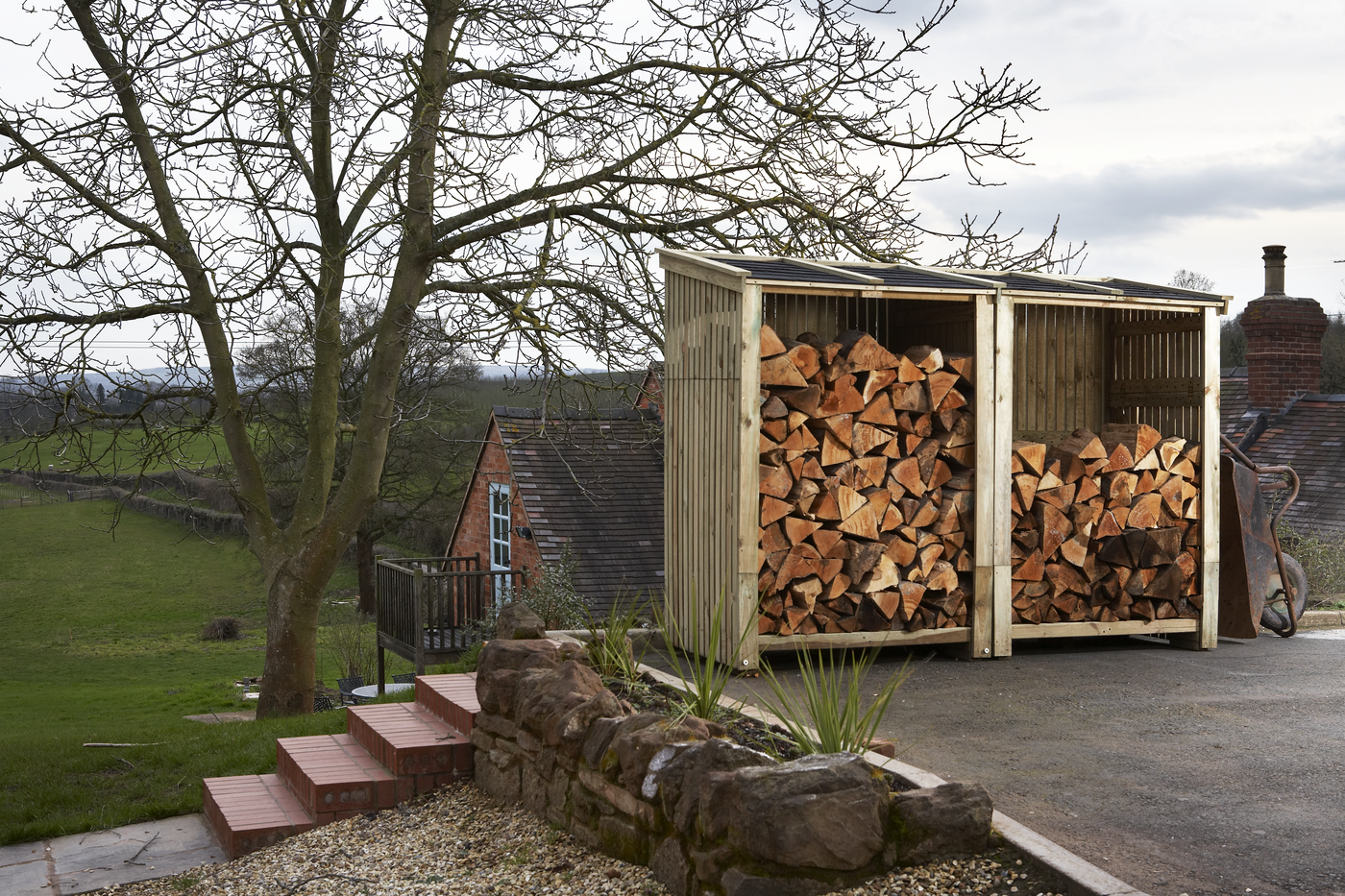Contact us 01531 584000
Opening Hours: Mon - Thu 9 - 4:30 Fri 9 - 1 Closed 20 December - 4 JanuaryFor Emergency Help over Christmas please use the Contact form

Wood log boilers typically burn virgin wood, which has been cut and processed into logs. Clean waste wood, such as carpentry offcuts, can also be suitable fuel. However, there are several important considerations when producing or purchasing wood, including proper storage and handling.
The most critical factor, whether you're buying or processing your logs, is moisture content. The wood must be dry, ideally with less than 20% moisture, and preferably under 15%.
Wood will naturally dry in the UK, though the process may be slower in wetter northern regions. The drying time depends on the type of wood, how it has been processed, and how it is stored.
Typically, wood is ready to burn after about two years of being stored in proper conditions and split early in the summer of the intended use. By "two years," this generally means two full spring and summer seasons. However, if the wood is split and properly stored in its first winter, it may be ready for burning by the next winter, depending on the wood type.
Splitting wood is crucial because it exposes the internal surfaces, allowing moisture to escape more easily with the help of wind and sunlight. It also increases the surface area, speeding up the drying process.
To effectively dry wood, elevate it off the ground using a ventilated surface like a pallet. Cover the top with a waterproof material, preferably black to absorb heat from the sun, and position the stack in an open area where wind can maximize drying.
When it rains, roads become wet. They soon dry when exposed to the sun and wind. If shaded or in sheltered spots, it can take days to dry.
It is the same if you store wood in an enclosed building such as a closed garage. Store your fuel outside covered from most of the driving rain and off the floor.

The density of the wood affects its drying time. Wood with a tighter grain structure takes longer to dry because moisture exits through the grain lines—natural tubes within the wood. When these tubes are smaller, it becomes more difficult for water to escape.
Hardwoods like oak have smaller moisture tubes, which slow the drying process, while softwoods such as pine have larger rings, allowing moisture to evaporate more quickly.
The benefits
Simple to operate and ignite
Burns logs and clean wood waste
Correctly sized once or twice per day fuelling
Located in a boiler room simplifies cleaning and maintenance
Very high efficiency up to 92% depending on model
Wood logs can be stored locally to the boiler house
The boiler house can be located remotely to the property to be heated
Can be easily linked with an alternative heating source
The check list
Requires a dedicated boiler room capable of fitting the boiler and accumulator
Requires daily fuelling
Fuelling is undertaken by hand
Requires occasional ash removal
Requires annual maintenance by engineer
